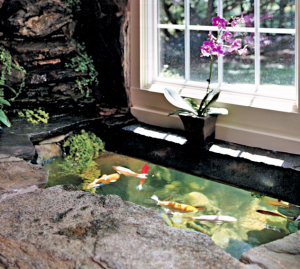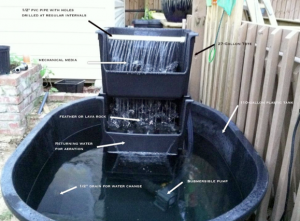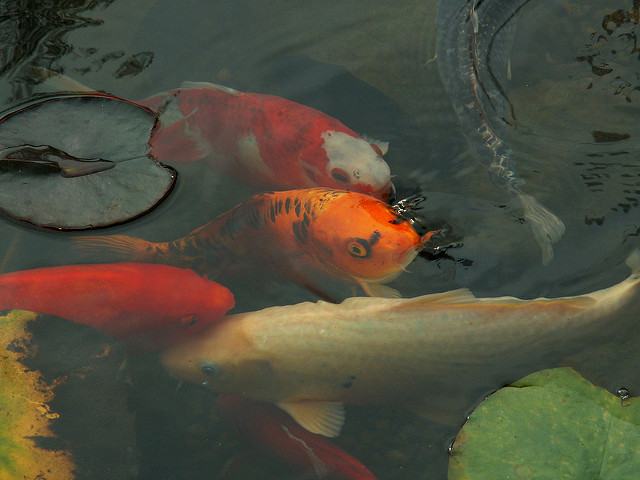It’s warm out. It’s been a long winter where koi sightings are few and far between. Visions of a bright new addition to the pond have grown more vivid. You think to yourself, “I could totally buy koi right now.”
Then you ask yourself, “Is one time better than another to buy a koi fish?”
You’re probably asking yourself this now because the widely accepted answer is that spring and early summer are the “best time” to buy koi. Water temperatures will start to rise. Warmer water is less of a shock to a koi, as it stimulates a more active immune system, and makes it easier for your fish to battle off infection and parasites.
However, the “best time” depends, really.
Best for one koi is not best for another. For example, if your preference is a Japanese-born koi, October is the recommended month to pick out a tosai (one-year-old koi). They will have spent the whole growing season in the relative tranquility of a mud pond, so will have filled out and developed in an environment as close to natural as possible.
However, that isn’t always the case. There are several variables that go into the “best time” to buy a koi.
Indoor or Outdoor
 Koi are cold blooded (Poikilothermic to be precise). A koi’s ideal water temperature is between 65-75ºF (which varies slightly according to what you consider a “credible source”).
Koi are cold blooded (Poikilothermic to be precise). A koi’s ideal water temperature is between 65-75ºF (which varies slightly according to what you consider a “credible source”).
The ambient water temperature regulates a koi’s body temperature. So the seasons affect its overall state of health and well-being. The warmer the water, the more active the bodily functions will be.
To give your new addition the best possible environment to acclimate, you will want the conditions to be optimal. Higher water temperatures mean a more active and more hungry koi, which—in turn—ordinarily means a healthier koi. Additionally, higher temperatures bolster the immune system, limiting the likelihood of infections.
If your pond is outdoors, your koi are subject to fluctuations in water temperature. And if you’re going by the suggested optimal water temperature range, buying koi would be best in the spring or the fall (however, in the fall you will need to take the quarantine time into account, too). So like the porridge Goldilocks purloined, it’s not too hot and not too cold.
But again, that is not to say that summer isn’t a good time either. In warmer climates, there can be measures taken to help keep the water cooler (sail cloths, deeper ponds, floating water plants, shade trees).
But if you have an indoor facility, the water temperature is regulated year round. You can buy koi pretty much whenever you want.
Where You Live
If you are koi kichi in Fargo, North Dakota, there’s a good chance that your outdoor pond will be iced over for 5 months out of the year. Someone gifting you a koi in December probably isn’t in that fish’s best interests. The water temperature will be vastly different and can have negative outcomes on that koi’s immediate and long-term health.
Conversely, if you are living in West Palm Beach, FL, your average February temperature is 68ºF (with the low being 59, and the high 77ºF). Although several factors can affect the water temperatures, you can expect that Florida Koi aren’t going to need to bundle up. It makes it easier to buy and introduce koi to your pond throughout the year.
Is Your Quarantine Setup Mobile?
 First let us say, we are BIG advocates for quarantining protocols. We go through a rigorous quarantining process even after we get our koi from bio-secure breeders. The importance of proper quarantining can’t be stressed enough.
First let us say, we are BIG advocates for quarantining protocols. We go through a rigorous quarantining process even after we get our koi from bio-secure breeders. The importance of proper quarantining can’t be stressed enough.
Generally, 15 days to a month is a good amount of time to let your new koi quarantine. At that point they will have had time to acclimate to the water parameters, as well as a long enough period for any bacterial issues or parasites to manifest themselves.
So, after all that, where you quarantine will also impact when you can (or should) buy koi. An outdoor quarantine tank or pond is at the mercy of the outdoor elements—specifically the ambient temperature (the effects of which we already discussed).
Some enthusiasts have the ability to move an outdoor quarantine setup indoors (to the garage or basement primarily), which helps to keep the temperature in more comfortable parameters. It effectively makes it an inside pond.
This means that buying a koi isn’t off the table for someone in colder climates. So if you see a koi that you just have to have, it can be overwintered in the quarantine tank for the coldest months and introduced in the warmer months.
Specials Season
There are a lot of dealers and breeders that are keen to start emptying tanks to make room for the following year’s stock. This usually translates into deeper savings on the koi that are in those tanks come September and October.
If your inclination is to wait for a good deal, then the fall can have some gems at decent prices too. But again, if you are planning to quarantine, you should take that into account, too.
And here comes the shameless self-promotion. If you are unfamiliar with the Next Day Koi discount model, our fish are nearly always on “sale.” Along with already competitive pricing, the longer a koi stays on the market, the deeper the discount on that koi becomes. Additionally, we offer sales specials throughout the year. So if you need/want Standard Koi or Butterfly Koi, we have them for you. All on Next Day Air.


Hi!
I am interested in buying a “Showa” KOI! I love the fish with RED, Black and white markings! Do u have any RED showa’s in stock?
Thanks!
Jill Smith
Hi Jill. All of our Showa for sale are listed here
https://nextdaykoi.com/koi-fish/koi/gosanke/showa/
Thanks!
[…] Is There a “Best Time” to Buy Koi Fish? […]